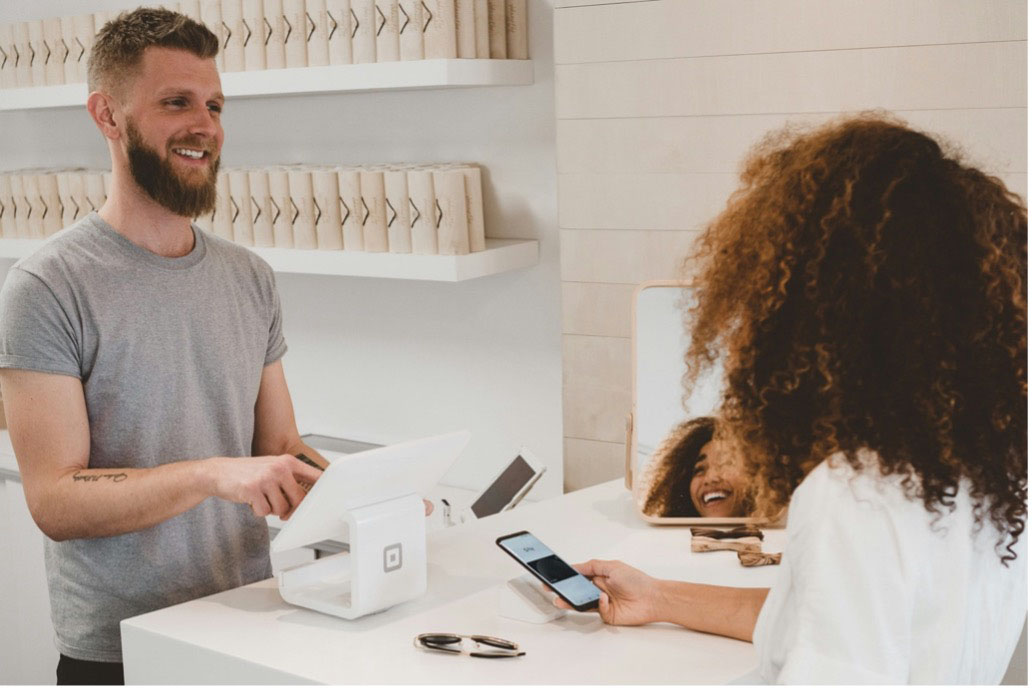
- Nearly half (46 percent) of shoppers get more of a mood boost from the experience itself rather than the items they buy, according to research by PPL PRS
- Just one percent of Brits purchase purely online in good news for the retail sector, with two-thirds (64 percent) making the trip to the stores regularly
- Being able to try before they buy is the main driver (59 percent) – but for two-fifths (39 percent), it’s just a good excuse to get out of the house
- The music playing is key to customer experience for just shy of a quarter (23 percent), but most important is promotions (58 percent) and friendly staff (57 percent)
- Brits ranked grocery (23 percent) as the best stores for customer experience, followed by department stores (15 percent) and fashion (11 percent)
Nearly half of Brits (46 percent) get more of a mood boost from the experience of shopping itself rather than the products they buy, according to a new survey by music licensing company PPL PRS.
The survey of 2,000 Brits found that the in-person retail industry shows no signs of disappearing, as just one percent of respondents claimed to shop purely online.
For that minority, it’s the crowds (48 percent) deterring them from hitting the high street, with online shopping winning thanks to having better deals (37 percent) and its convenience (33 percent).
But when it comes to the majority, the benefits to shopping in-store are multi-faceted; being able to try before you buy (59 percent), visiting multiple shops in one trip (52 percent) and even having an excuse to get out of the house (39 percent) are most enticing. Respondents also cited perks including being able to people-watch, supporting local businesses and not having to wait for a delivery.
So, how can retailers create the perfect atmosphere in-store to deliver on customer experience and keep shoppers loyal? According to the research, promotions (58 percent) are still key, but equally important is friendly staff (57 percent), while good music playing defines the experience for a further quarter (23 percent).
When asked how music amplifies the shopping experience, more than a third (37 percent) say it’s important. Just one in 10 (10 percent) prefer a silent shop.
When it comes to genre, retailers should opt for shoppers’ favourite genres – pop (36 percent), classical (17 percent) or RnB (16 percent) – but veer away from heavy metal, house and world music, which were the least preferential to those surveyed.
Music therapist for PPL PRS Marianne Rizkallah explains: “Music has mood-enhancing powers. When customers enter an environment that’s sound-tracked by a catchy beat or familiar tune, they may feel happier. If we feel good, we’re more inclined to treat ourselves.
Pop is recurringly popular across sectors, perhaps due to the upbeat tempo and memorable lyrics that characterise this genre. Plus, pop has evolved greatly over the decades; it draws on influences from other genres so is more diverse than ever, driving mass appeal.”
If you’re a retailer looking for inspiration as to how to nail customer experience in store, look to the grocery sector for inspiration – its stores were ranked best for customer experience by shoppers (23 percent). According to those surveyed, the worst stores for customer experience were toy stores (two percent), furniture (3 percent) and home stores (3%).
The top 10 retail stores for customer experience:
Grocery (23 percent)
Department stores (15 percent)
Fashion (11 percent)
Booksellers (seven percent)
Technology (six percent)
Health (five percent)
Beauty (five percent)
Discount stores (five percent)
Jewellers (four percent)
Garden and DIY (four percent)
Customer experience pro Donna Gutteridge, Culture & Service Lead at Oliver Bonas, explains: “We’re creatures of habit, so the high street is here to stay – but customer experience will become more crucial than ever before. As shoppers are seeing it as an excuse to get out of the house, it’s down to retailers to make the journey worth making.
Experience within a retail venue is driven by our senses, so think about how they can be stimulated. Music gives us a soundtrack to shop along to, but the results show that touch is equally important. Food retailers could think about samples to please our tastebuds, or homeware stores could demonstrate their candle fragrances to keep our sense of smell stimulated.”









